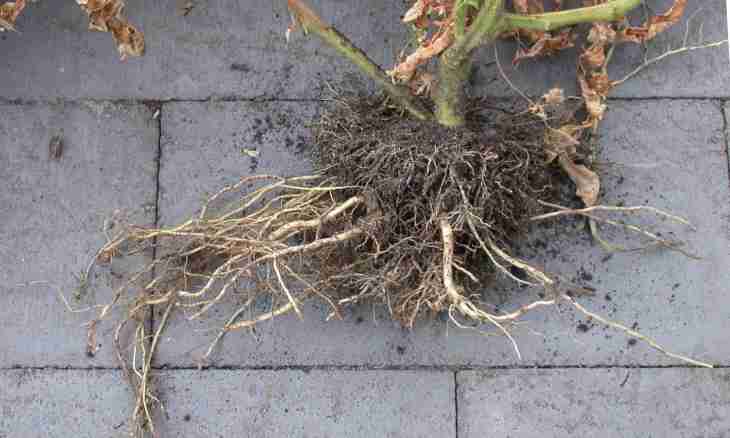The root is a vegetative body of the higher plants which can reach unlimited length and provides supply of plants with water and useful elements. Some plants accumulate nutrients in roots, such roots are called root crops.
Instruction
1. Modern plants passed a long evolutionary way, having come to the land from water. Roots then at plants were not trace and, but gradually eventually some parts of these representatives of the living world went deep into the earth, and became ancestors of root systems which can be observed today.
2. There are several various root systems, depending on living conditions and a concrete look. The core root system has very strong main root and generally meets at trees. The Mochkovaty system also has the main root, but only at early stages of development. Further it dies off, but the similar building allows to braid better that part of soil which will feed a plant. There are also additional, basic and air roots. The last do not even go to the soil, and are used for fixing of a stalk at climbers.
3. The main function of a root – providing a plant with soil food, for this purpose a root exhausts mineral substances and water from the soil. As a result of such food of a plant receive such substances as magnesium, calcium, phosphorus, nitrogen-sulfur connections and other useful elements. One of the most useful substances is magnesium without which formation of a chlorophyll which gives to leaves green color is impossible.
4. Other major function of a root is a strengthening of a plant in the soil. To imagine the higher plants without this factor rather difficult, if they do strong not keep in the soil, wind and a rain will simply destroy them.
5. A vegetable root, being vegetative body, provides to some plant species reproduction function. Additional kidneys which are formed on roots give life to elevated escapes to such representatives of flora as a lilac, an aspen, raspberry, plum, a dandelion and many others. The grown-up escapes separate from roots and lead an independent life.
6. The reserving function of a root also has not the last value. Here not only the substances exhausted from the soil but also the nutritious elements received from leaves in autumn season collect. Thanks to the fact that plants are capable to accumulate nutrients in roots they are capable to worry winter and to grow up in the spring new leaves.
7. Roots bring invaluable benefit not only to plants, but also the nature in general. The sandy soil penetrated by roots receives noticeable strengthening, and the dying-off parts of roots serve as food for a large number of microorganisms. You should not forget that roots of some plants serve as food and to the person.

